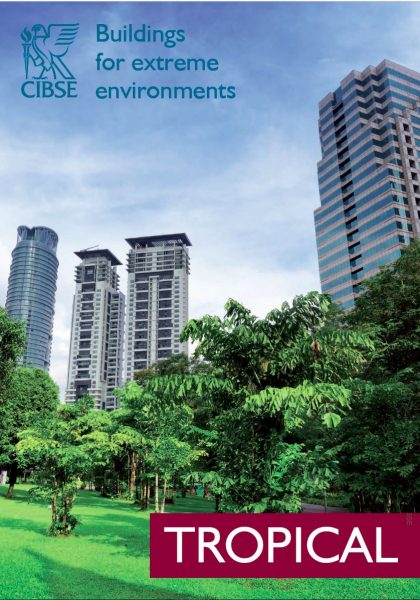One of the first steps for any consultant on a new project is to evaluate the local climate. What are the environmental design criteria, which bioclimatic strategies are likely to be most relevant, when will the most critical temperatures be reached?
As engineering and architecture firms increasingly work outside their own regions, and professionals are contracted to give design advice in regions they may barely know, they will need more than just an updated weather file to optimise their designs. This is the idea behind the publication of the latest CIBSE* guide, “Building for Extreme Environments: Tropical”.
Tropical regions cover much of Africa, Latin America and the Asia-Pacific region, areas which are investing heavily in construction and where the design of an ever-more-complex built environment takes on increasing importance.
Working collaboratively with CIBSE members in tropical regions around the globe, the similarities in the challenges we face quickly became apparent. To give a few examples, we covered issues including:
- The difference between mixed-mode and fully conditioned buildings becomes vital, as this will impact their climatic response and a whole range of design criteria. Within thermal comfort criteria and adaptive comfort models, the use of air movement can be an important strategy.
- Window shading must be carefully designed due to the high proportion of diffuse radiation from hazy skies and high cloud cover during rainy seasons.
- High humidity levels and low dew points will significantly increase the quantity of condensate from heat exchanger coils; meanwhile chilled water pipes will often be above the dew point temperatures.
- Surface protection from radiation becomes an important strategy, which can be achieved through high reflectivity systems or shading of horizontal surfaces.
The document we finally produced is divided into five main sections:
Introduction discusses climatic considerations, classification and basic data on tropical areas.
Design information focuses on the key design criteria for building users.
Building design, construction and materials provides information on how tropical climates will affect key design decisions.
Equipment design provides engineers with the information needed to design building services in these climates.
Sustainability unifies many of the aspects from the previous chapters, to provide a broad framework for sustainable design in tropical climates.
It was a pleasure to work with CIBSE and all the team involved in development and preparation of this guide over the past few years. We hope it will be an essential reference for engineers, architects and consultants to produce low-energy, sustainable buildings which are appropriate to their surroundings.

*The Chartered Institute of Building Services Engineers, or CIBSE, is a professional body headquartered in the UK, which brings together a global network of engineers to develop best practice advice and pioneer responses to climate change through the design and operation of the built environment. See cibse.org for more information.


